Top speed 507 km/h Wingspan 43 m | Range 9,495 km Unit cost 5,513,000–5,513,000 USD First flight March 28, 1957 | |
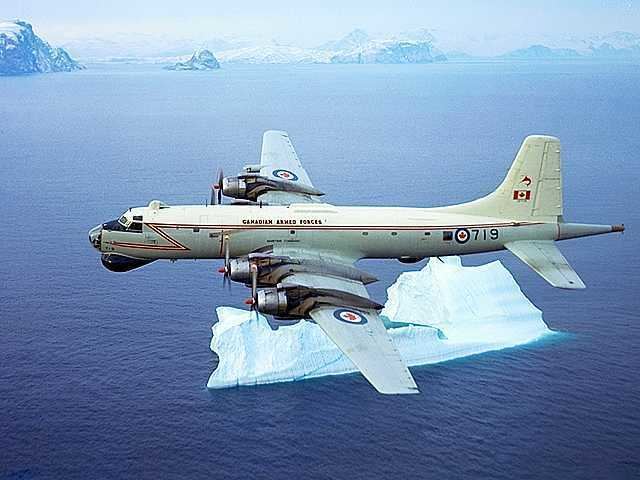 | ||
Engine type Wright R-3350 Duplex-Cyclone | ||
The Canadair CP-107 Argus (CL-28) was a marine reconnaissance aircraft designed and manufactured by Canadair for the Royal Canadian Air Force (RCAF) and Canadian Forces (CF). In its early years, the Argus was reputedly the finest anti-submarine patrol bomber in the world. The Argus served throughout the Cold War in the RCAF's Maritime Air Command and later the CF's Maritime Air Group and Air Command.
Contents

Design and development
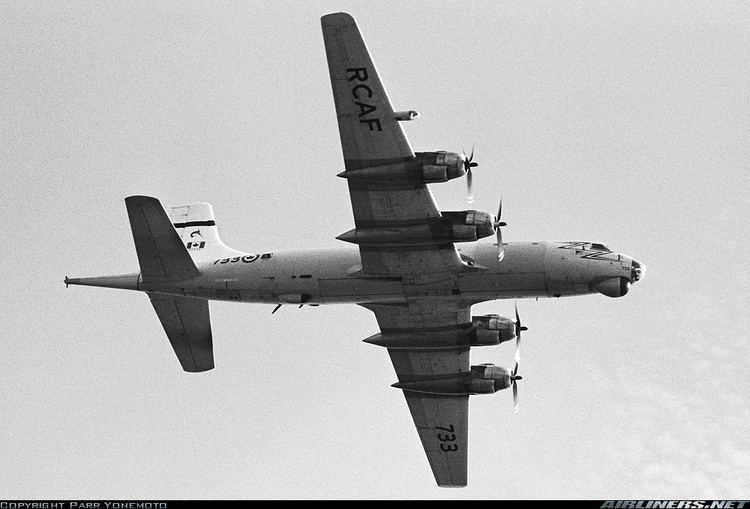
Canadair began work on the CL-28 in April 1954 and at the time it was the largest aircraft built in Canada. The hybrid design, initially referred to as the 'Britannia Maritime Reconnaissance', or 'Britannia MR', was derived from the Bristol Britannia transport, having the same wings, tail surfaces and landing gear except for being "Americanized" – meaning that it used the same general design, but changed the British materials and standard parts for North American ones.

The fuselage was completely redesigned by Canadair, going from the pressure cabin of the Britannia to an unpressurised one with bomb bays fore and aft of the wings. The powerplant was also changed from the Bristol Proteus turboprop engines to Wright R-3350 compound (piston) engines, which had lower fuel consumption necessary for extended missions at low level. At the design stage the other possible engine was the Napier Nomad, another turbo compound engine, although the Nomad was later cancelled.
Testing
From July 1960, a CP-107 Argus underwent hot weather testing at Eglin AFB, Florida.
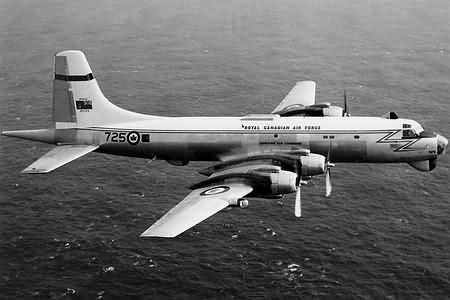
Since the Canadian climate is comparatively cool, even in mid-summer, a team of 35 RCAF officers and airmen have come to Eglin for six weeks to evaluate the performance of their four-engined Argus patrol craft in a hot-weather environment. Squadron Leader Garnet W. Ovans pointed out they could have tested the Argus in a much warmer location, 'but we picked Eglin because it also had the necessary humidity range, and especially because of the extensive testing facilities here. The APGC project officer for the test of the Argus is Major Charles E. Dougan, of the Directorate of Strategic Systems Test. While at Eglin, the 35-man RCAF crew will collect high-temperature performance data on the Argus, including fuel consumption rates, takeoff and landing distances, maintenance techniques, and functional checks of the armament systems.
Operational history
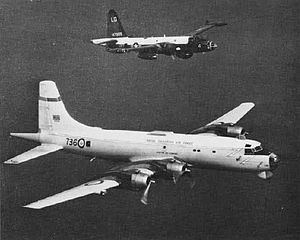
The Argus replaced the RCAF Lancaster and Lockheed P-2 Neptune aircraft types previously flown in the maritime roles. One of the most effective anti-submarine warfare (ASW) aircraft of its day, the Argus was a mainstay for the RCAF. A large amount of equipment was carried, including: search radar, sonobuoys, electronic counter measures (ECM), explosive echo ranging (EER) and magnetic anomaly detector (MAD). Up to 8,000 lb (3,632 kg) of weapons could be carried in the bomb bays, including torpedoes, bombs, mines and depth charges.
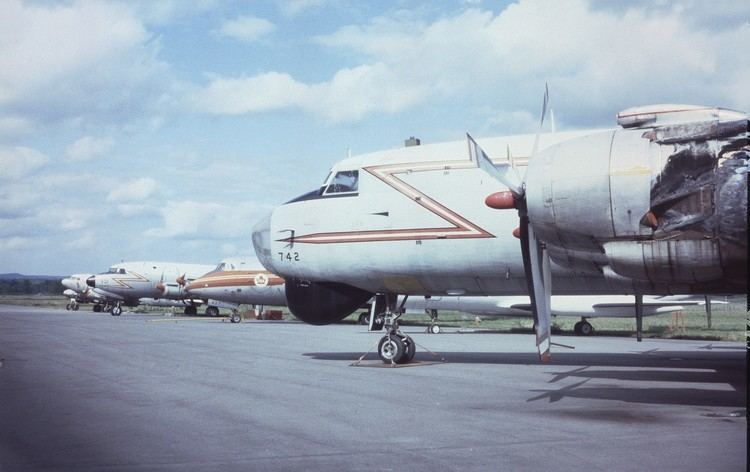
A flight crew of 15 consisting of three pilots, three navigators (Observer Long range), two flight engineers and six radio officers (observer rad) until the early 1960s when the crew included both commissioned officers (tactical navigator/radio navigator) and non commissioned officers (observers), the number of which was dependent on the mission. Four crew bunks and a galley were provided to extend the efficiency of the crew on long patrols (average 18 hrs). The CL-28 had an endurance of approximately 26½ hours with full armament. An Argus flown by 407 Maritime Patrol Squadron held the Canadian military record of slightly over 31 hours for the longest flight by an unrefuelled aircraft.
The principal difference between the Mark I and Mark II was primarily in the different navigation, communication and tactical electronic equipment fitted internally. Externally, the Mk II exhibited a redesigned smaller nose radome and additional ECM antenna above the fuselage.
The Argus flew its last service mission on 24 July 1981, and was replaced by the Lockheed CP-140 Aurora.
Variants
Operators
Survivors
Specifications
Data from The Encyclopedia of World Aircraft
General characteristics
Performance
Armament
Max 8,000 lb bombs, depth charges, torpedoes, mines and 3,800 lb air-to-surface missiles and free-fall weapons on underwing hardpoints
